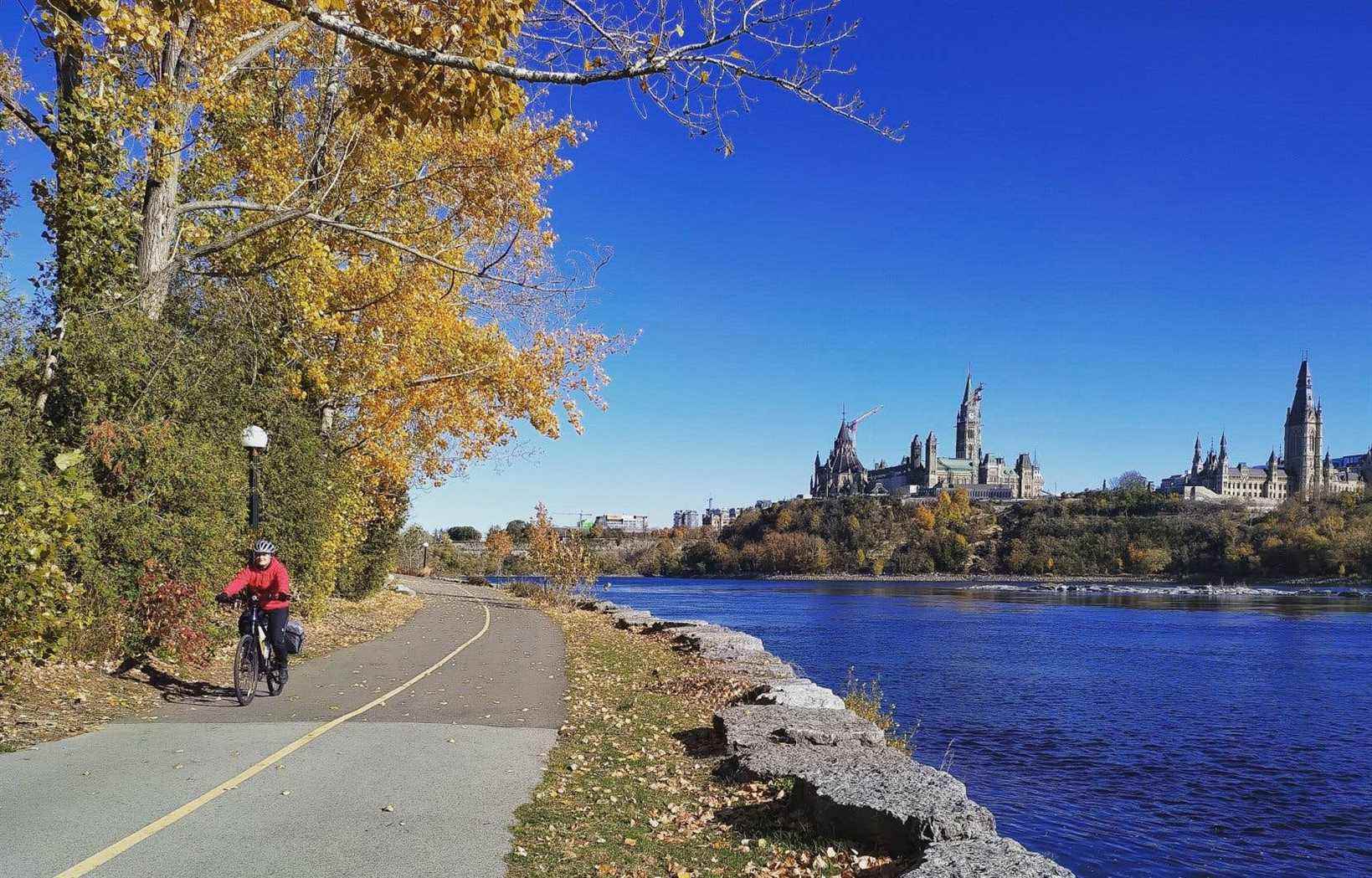This text is part of the special Plaisirs booklet
No matter where you are in Ottawa, you are never far from a hiking or biking trail. These installations give the opportunity to admire places steeped in history. As a bonus, the fall colors are still blazing there.
Nature and heritage
The sublime Gatineau Park and its 210 km of trails, many of which are lined with interpretive panels, is located on the outskirts of Ottawa and Gatineau and is managed by the National Capital Commission. Here, the hike is accompanied by a historical and heritage dimension: the Lac-Pink trail, a small loop of 2.3 km on a footbridge, which circles the meromictic lake named in honor of the Pink family, which was established in the surroundings in 1826. A belvedere allows to admire the steep cliffs.
The proliferation of algae gives the lake a beautiful green tint. While fishing is permitted in all of the park’s lakes for license holders, Pink Lake, which is particularly fragile, is exempt. Note that the belvedere is also accessible to people with reduced mobility.
The Chute and Lauriault forest trails are on the Mackenzie King Estate heritage site, the former residence of the Prime Minister of Canada who served for three terms between 1921 and 1948.
The Moorside sector, particularly popular with hikers, is home to ruins from the Ottawa parliament in particular – fireplace mantel and walls of the abbey – remains saved following the fire on Parliament Hill in 1916. Combined, the loop and the historic site complement each other in a two-hour walk with a must-see stop at the Mulvihill Lake Lookout.
Practical information : accessible by parking lot P6. Those who love serious hikes will have plenty of fun, especially with the Mont-King trail, a small loop that allows you to swallow 300 m of elevation gain, or that of Chute-de-Luskville which overlooks the Luskville valley. ‘Outaouais and the foothills of the Canadian Shield. Accessible by the parking lots of the same name. Maps and info at the Chelsea Visitors Center.
The bike runs in the veins
The Ottawa region has long been a hotspot for road biking, with 800 km of exceptional quality cycling lanes. From May to October, “weekend bikes” (an event until recently called “Sunday bikes”) have long offered cyclists the opportunity to ride freely on arteries closed to traffic, proof of the roots of this activity in the region. Escape Ottawa, a new company created in early 2020, celebrates biking in all its forms: rentals (including e-bikes), themed coffee shops, and guided two-wheeled getaways. “We opened just before the pandemic,” explains to me with a smile the passionate and sympathetic Maria Rasouli, owner of the company, originally from Iran, and who has made cycling a real art of living. Since the resumption of activities, we are very popular for guided tours in Ottawa, but also to Gatineau. “
To be convinced, Maria Rasouli precedes me on the Ottawa River bike path, which runs along the eponymous river for about thirty kilometers. Admirable views follow one another with the great monumental buildings of Ottawa as a backdrop. The Sentiers de la Capitale are aimed at all types of cyclists, from beginners to experts. In downtown Ottawa, a 7.5 km trail allows you to tour major points of interest in complete safety: the Rideau Canal and its locks, Parliament Hill, the Canadian War Museum, the Beaux-Arts du Canada and its parks. “Cycling is the best way to discover Ottawa and realize that this city has many surprises in store,” says Maria Rasouli.
Practical information : Escape Ottawa offers several guided packages, from one to three hours, depending on the level of practice, the vast majority on bike paths.
Madahóki farm
Nepean Farm has retained the appearance of the old farm property, with its old barns, seasonal crops, farm animals and pens. This year it has become a brand new Indigenous cultural site, led by the Algonquin managers of the company Native Experiences, who perform notably at the Canadian Museum of History in Ottawa. In autumn, the Tagwagi festival welcomes visitors around traditional performances of song and dance, especially in a green theater. You can also visit the farm animal boxes, as well as observe the Ojibway ponies, which have long been threatened with extinction. The Reconciliation Trail is lined with interpretive panels about the medicinal plants grown there, and is bordered by rocks marked with messages of hope. In the huge main building, shows are presented during the winter festival, promised this year (unless otherwise stated) during the first two weekends in December. A great reconversion between nature and culture.
Practical information : a stop at the artisanal shop on Madahóki farm to buy local products and traditional handicrafts.
